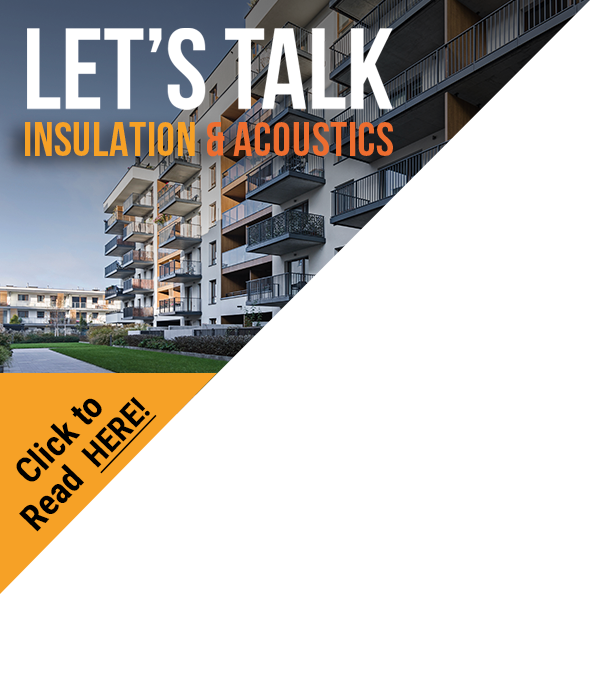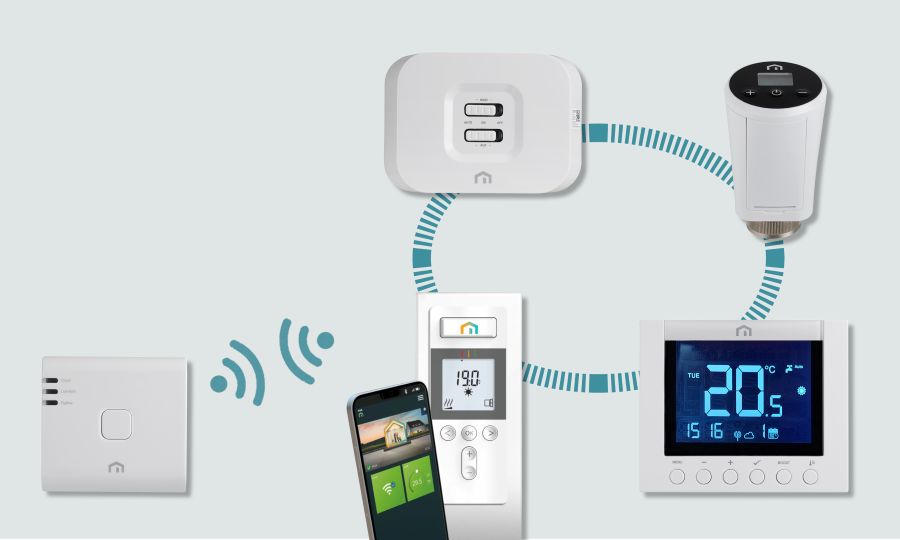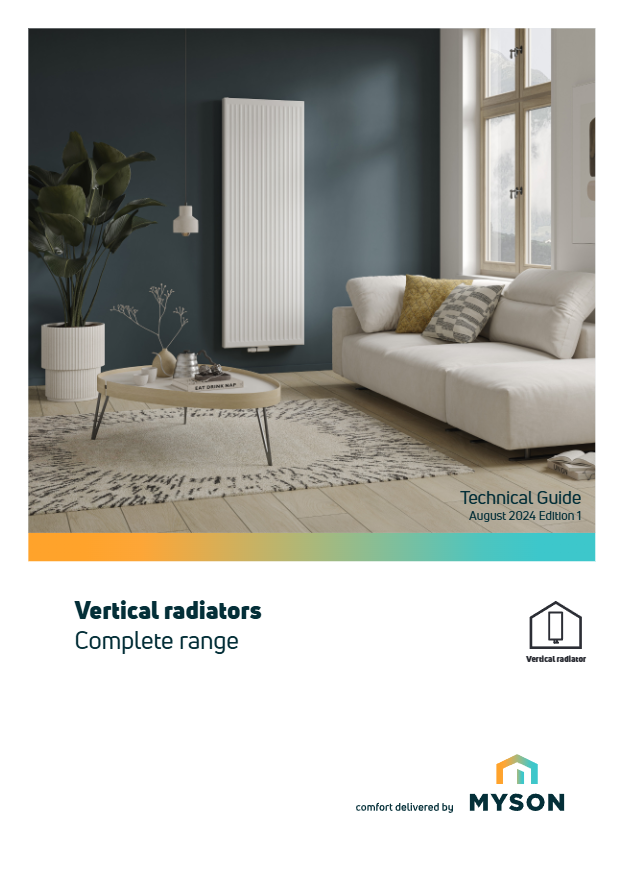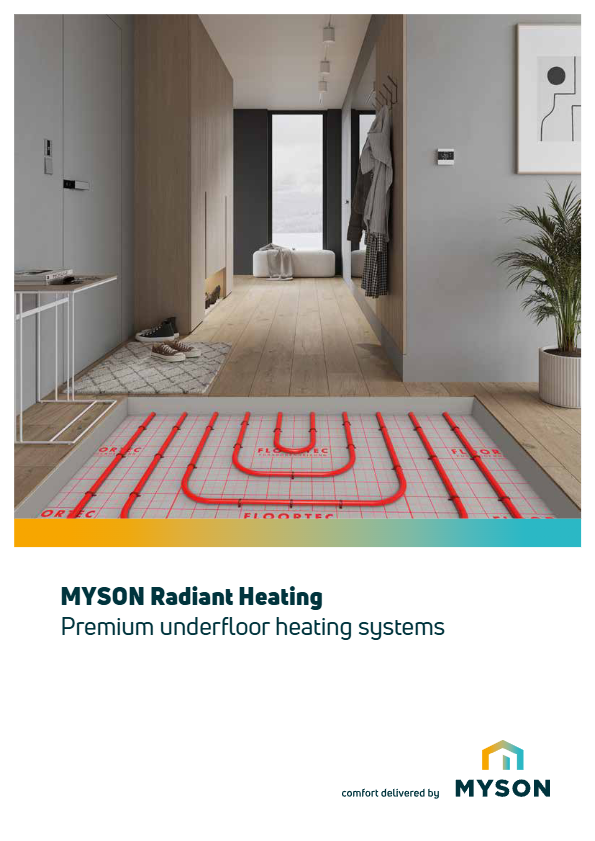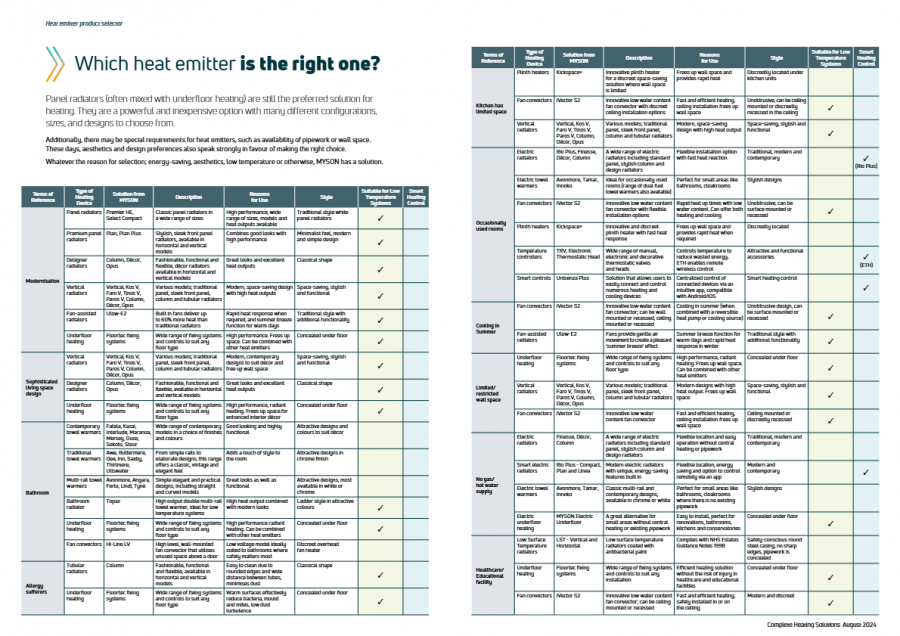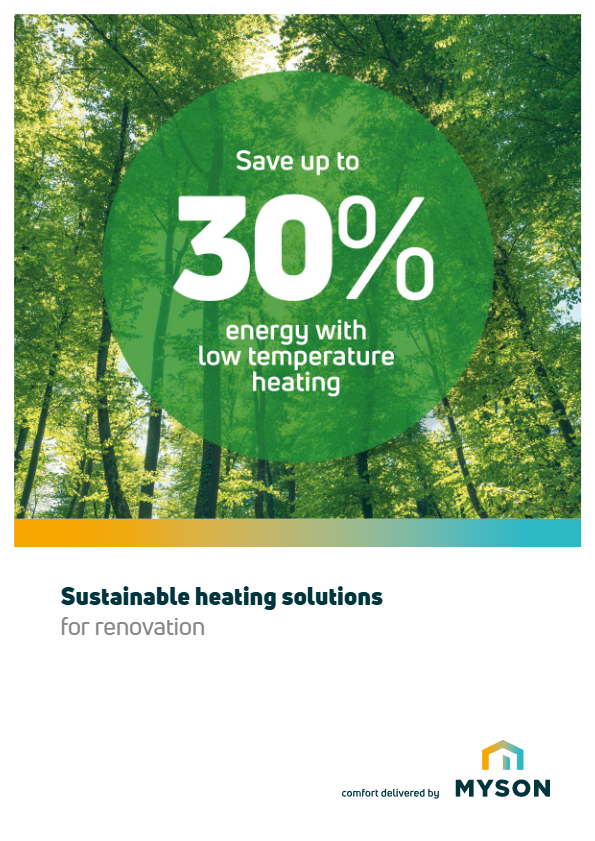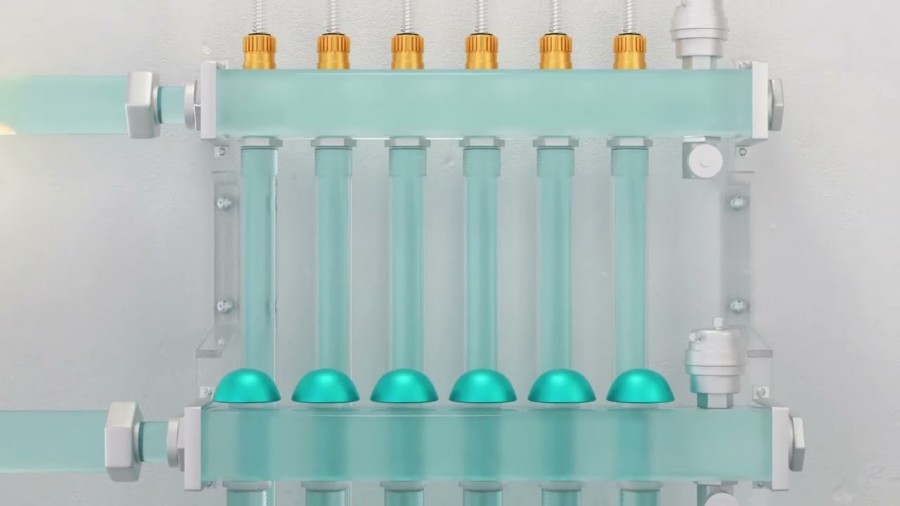Our common goal to meet climate ambitions is driving us to heat our buildings as efficiently as possible. Modern insulation standards are already a big step forward in this mission, but energy-efficient heating systems supported by low-temperature emitters are a must if we want to commit to carbon reduction. Low-temperature radiators or heat pump radiators are fast becoming a preferred choice in residential and commercial heating applications. Thanks to their ability to seamlessly integrate with renewable energy sources, these radiators have become a vital factor in contemporary HVAC designs.
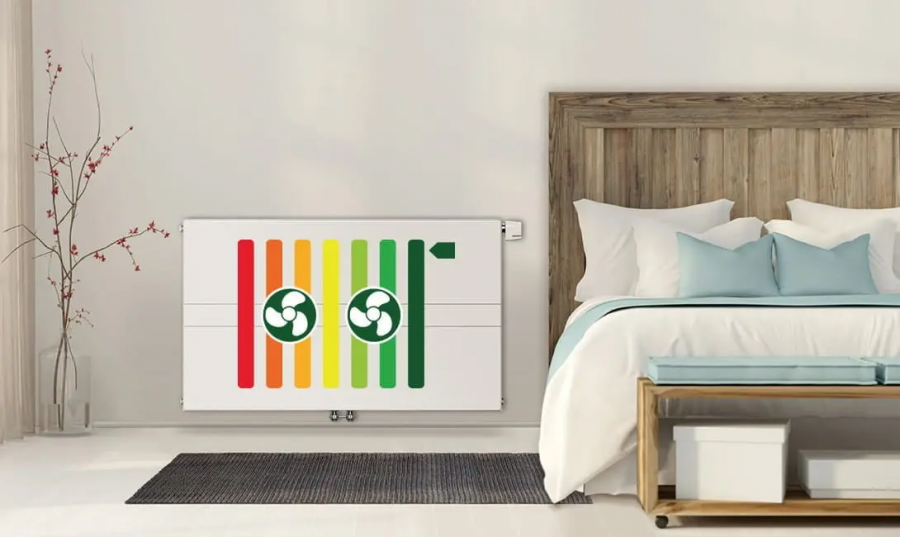
Understanding low-temperature radiators
In the past heating systems were generally set up with flow temperatures of 70 to 80°C. However, now that both new and renovated buildings are becoming increasingly well-insulated, a heating system with the appropriate radiators can operate at temperatures between 30 and 50°C without compromising on comfort. Consequently, both the system temperatures of the central heating water and the surface temperature of the radiator are much lower. The lower operational temperatures contribute to better energy efficiency as well as a reduced carbon footprint.
Additionally, the kind of heat emitted by the radiators changes when the system temperatures drop. Traditionally, a radiator provides about 65% convection heat, meaning the air around the radiator heats up on its warm surface, rises above the radiator and gradually heats the air in the room. 35% is radiant heat that is felt more directly when the heat rays emitted by the radiator penetrate the room and hit the objects, people, and surfaces that are present. However, when the flow temperature drops below 45°C, the convective share of the heating is significantly reduced, as the temperature differences between the radiator and the warming air lead to lower buoyancy forces.
Low-temperature radiators are designed with these parameters in mind. Modern panel radiators, for example, have narrower water channels, which use less water and increase the size and quantity of convector fins for a more rapid heat response. Today panel radiators are also available in a wide variety of heights and configurations for increased heat output, including the Type 33 model with triple convector fins.
For system temperatures below 45°C, fan-assisted radiators or fan convectors are great options, provided that a power supply is available near the radiators. These emitters use integrated fans to support the convective heat dissipation and increase the total heat output by up to 60% compared to standard radiators, allowing for an innovative heating approach.
What are the requirements for installing low temperature radiators?
Before you install low-temperature radiators, it’s vital that the building’s insulation meets modern standards. Low-temperature heating will only be worthwhile if the insulation can help minimize heat loss and keep the temperature at the set level. Otherwise, it will be nearly impossible to ensure optimal thermal comfort. Low-temperature heating is therefore ideally suited to new buildings as they are constructed with a high level of insulation from the outset.
However, low-temperature heating is also increasingly applied in renovated buildings where improvements have been made to the insulation to enhance the structure’s thermal performance. In such cases, it’s important to recalculate the heat load for each room to determine the appropriate radiator size and capacity so that you can ensure heating demands will be met effectively.
Moreover, low-temperature radiators need to be combined with a suitable heat source and distribution system for maximum efficiency. The good news is that often financial support is available for the installation of such heating systems in the form of government grants or subsidies promoting sustainable heating solutions.
Different types of low-temperature radiators
There are several types of low-temperature radiators or heat pump radiators, each with their own features ensuring optimal efficiency and performance.
- Modern panel radiators are available in different designs and easily integrate into a variety of interior styles. They offer a wide range of horizontal and vertical models in many different sizes to suit different applications, from private homes to commercial buildings, schools, hospitals, etc. Modern panel radiators are suitable for flow temperatures of 45°C and above.
- Designer radiators might not be intuitively linked to low-temperature heating, but, just like modern panel radiators, their design has been optimised to ensure maximum performance at temperatures of 45°C and above. If you are looking to add value to the interior, this option combines great looks and excellent heat outputs.
- Fan-assisted radiators are equipped with integrated fans that circulate the warm air more quickly, so they are very suitable to maintain efficiency even at system temperatures of 35°C. Because the fans boost the heat output, fan-assisted radiators are sized smaller than panel radiators, making them a great option for rooms with limited space, or in renovation projects where old radiators need to be replaced because the system temperatures drop.
- Fan convectors or fan coil units are equipped with a heat exchanger (coil) through which hot or chilled water flows. An integrated electric fan blows air over the coil to distribute the conditioned air throughout the room. This helps to create a high heat output at system temperatures as low as 35°C. Fan convectors can be used for heating as well as active cooling, which makes them very versatile and particularly popular in offices, hotels, schools, retail, and many other commercial premises where both heating and cooling are needed.
Discover more details in our comprehensive radiator comparison
Heat sources for low-temperature radiators
Low-temperature radiators are most effective when paired with energy-efficient heat sources and vice versa. A condensing boiler, for example, can only realise its full potential at low system temperatures. If the system temperatures are low, the boiler can recover more latent heat from the flue gas and make better use of the energy content from the fuel. As a result, the efficiency of the overall system increases.
The term heat pump radiators already suggests that this type of emitter is also very suitable to be combined with heat pumps. Heat pumps offer an eco-friendly alternative to traditional heat sources by extracting heat from the air or ground and transferring it into the heating system. They operate more efficiently when heating at lower temperatures, below 50 or 45°C, which makes them perfectly compatible with both underfloor heating and low-temperature radiators.
Although condensing boilers and heat pumps are the most popular options, low-temperature boilers, solar thermal systems, and district heating networks are certainly also interesting options to consider and are easily combined with low-temperature radiators.
Whichever of the above heat sources are used, it’s important to first ensure the building is sufficiently insulated and, second, to combine it with low-temperature emitters. Only then will you create a highly efficient heating system. If not done correctly, the heat pump can even increase the heating costs compared to the old boiler.
Advantages of low-temperature radiators
Low-temperature radiators are very energy-efficient.
Since the flow temperature of the water drops significantly, a heating system with low-temperature radiators needs about 30% less energy to heat a room compared to a system with higher temperatures. This reduces energy consumption as well as emissions, resulting in a win for the environment and for the end users' wallet.Low-temperature radiators ensure an even heat distribution.
Low-temperature radiators distribute warmth gradually and uniformly. The design features mentioned above improve heat transfer and promote steady air circulation, which in turn reduces temperature fluctuations and cold spots within a room. Low-temperature radiators adapt more quickly to temperature fluctuations in the room and allow the heating system to react faster to both external and internal heat gains.Low-temperature radiators create a healthier indoor climate.
Low-temperature radiators with large heating surfaces produce less powerful air flows, which reduces the amount of suspended dust particles in the air and creates a healthier indoor air quality.
Flip side of low-temperature radiators
Low-temperature radiators are only compatible with certain heating systems.
As mentioned, you need a suitable heat source if you want to maximize the efficiency of low-temperature radiators. This can potentially be a stumbling block in a renovation project if you’re not looking to update the entire heating system.Low-temperature radiators need a larger heating surface.
To ensure optimal thermal comfort, low-temperature radiators (without fans) are typically larger in size, which can make them harder to fit with interior design. However, our innovative product design and technology allows us to provide alternative solutions in the form of vertical radiators, fan-assisted radiators and fan convectors.
Control strategies to optimise low-temperature radiators
In addition to the heat source and emitters, controls play an important role in the creation of an efficient low-temperature heating system. More control allows for better tailoring of the system, so that you only use the exact amount of energy you actually need to enjoy indoor climate comfort all year round. Simply adding thermostatic radiator valves, or even the Unisenza Plus electronic thermostatic head, to a modern panel radiator enables precise temperature regulation, reduces energy wastage, and improves comfort.
Find out more about how heating controls help to lower the cost of comfort
Fan-assisted radiators and fan convectors are equipped with standard integrated controls, designed with ease of use in mind, so you can operate the emitters and tailor heating to individual spaces to avoid unnecessary energy consumption. For ceiling mounted iVector S2 fan convectors, a remote control is available.
Conclusion
Low-temperature radiators offer a highly efficient, sustainable alternative to traditional heating systems. Their energy efficiency, compatibility with renewable energy sources, and enhanced comfort make them an attractive choice for modern heating applications in both new build and renovation projects.
We hope this article has helped to familiarise yourself with our range of low-temperature radiators. We are here to assist you so that together we can deliver effective, future-proof heating solutions.
Contact us
